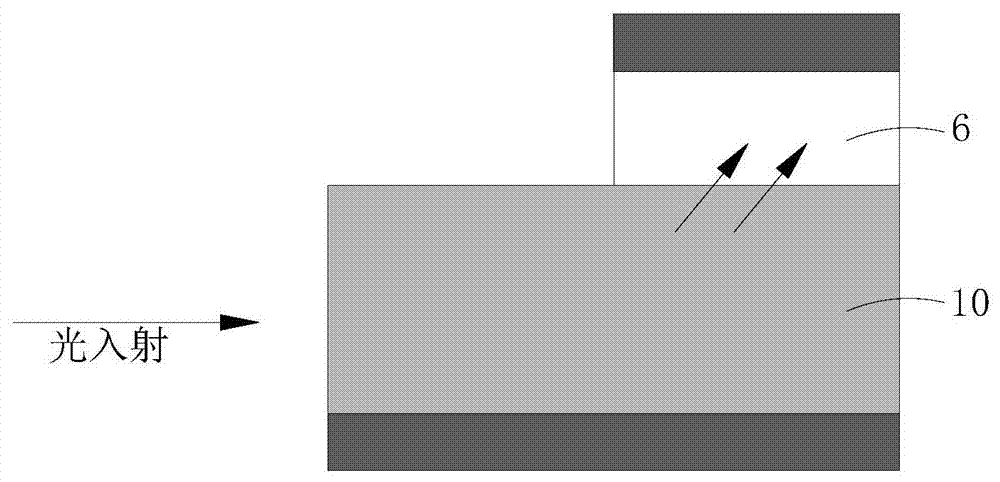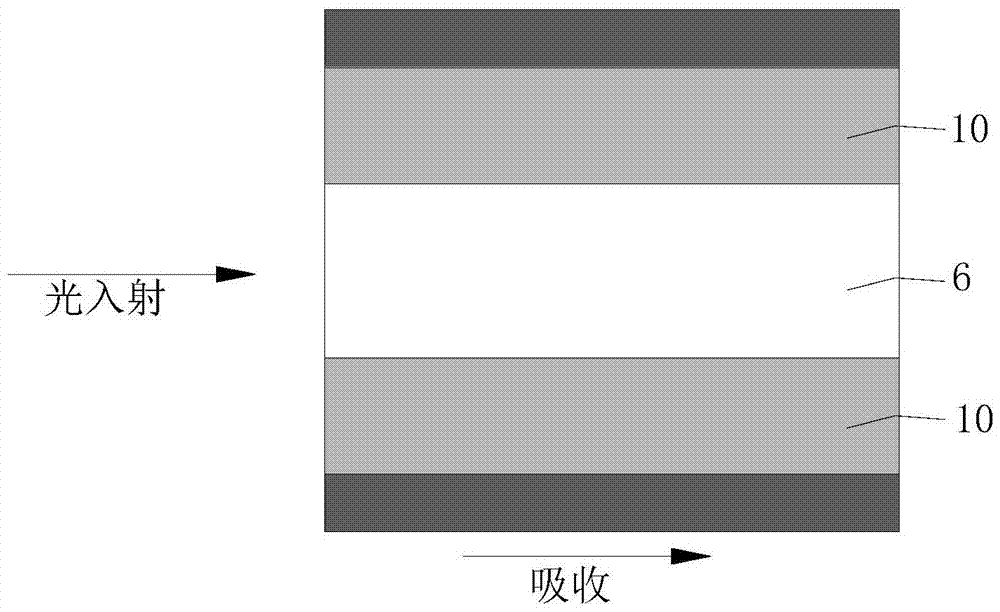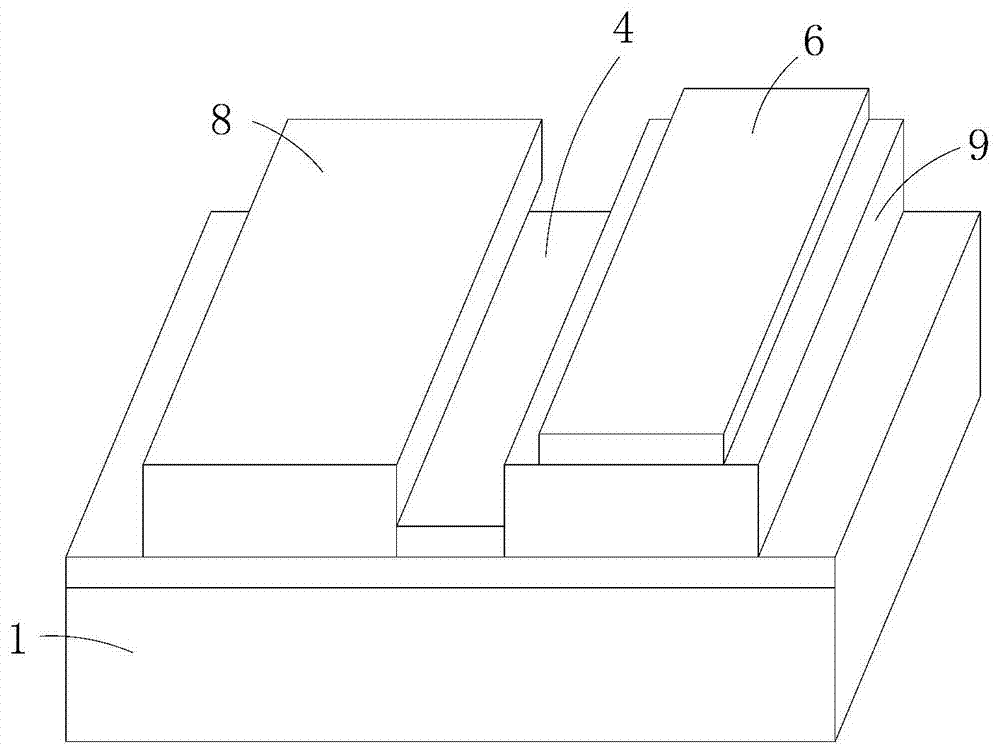Front-end input waveguide structure of a directionally coupled optical waveguide detector
A front-end input and directional coupling technology, which is applied in the coupling of optical waveguides, light guides, optics, etc., can solve the problems of weak propagation direction, uneven photocurrent distribution of waveguide detectors, and uneven photocurrent distribution, so as to increase the photocurrent , Overcome the shortcomings of the horizontally coupled waveguide detector and solve the effect of overheating and burning
- Summary
- Abstract
- Description
- Claims
- Application Information
AI Technical Summary
Problems solved by technology
Method used
Image
Examples
Embodiment
[0027] Embodiment: The following is the working wavelength of 1.55 μm, the material InGaAs (indium gallium arsenide) of the absorption layer 6, the material InGaAsP (indium gallium arsenide phosphide) of the upper waveguide layer 5, the lower waveguide layer 3 and the cover layer 2; the substrate layer 1 An example of a vertically coupled photodetector input front end of the material InP (Indium Phosphide).
[0028] First, some basic theoretical parameters of the front-end input waveguide structure of the waveguide coupler are listed:
[0029] waveguide material
InP
3.146
InGaAsP
3.33
InGaAs
3.56-0.1i
[0030] Table 1 Refractive index of various materials used in the detector;
[0031] Material of each layer
Thickness (μm)
Upper waveguide layer InGaAsP
3.5
Gap InP
0.09
Lower waveguide layer InGaAsP
3.05
Cladding InGaAsP
0.5
Substrate InP
15
Wa...
PUM
 Login to View More
Login to View More Abstract
Description
Claims
Application Information
 Login to View More
Login to View More - R&D Engineer
- R&D Manager
- IP Professional
- Industry Leading Data Capabilities
- Powerful AI technology
- Patent DNA Extraction
Browse by: Latest US Patents, China's latest patents, Technical Efficacy Thesaurus, Application Domain, Technology Topic, Popular Technical Reports.
© 2024 PatSnap. All rights reserved.Legal|Privacy policy|Modern Slavery Act Transparency Statement|Sitemap|About US| Contact US: help@patsnap.com










